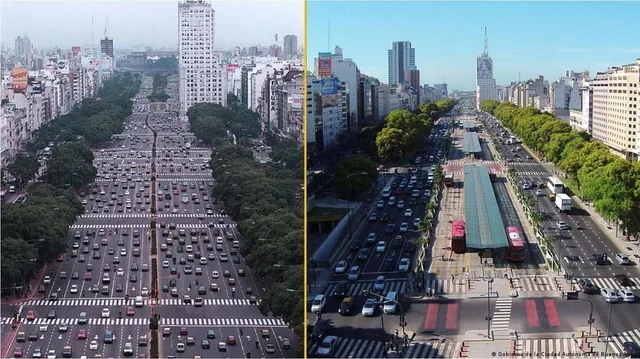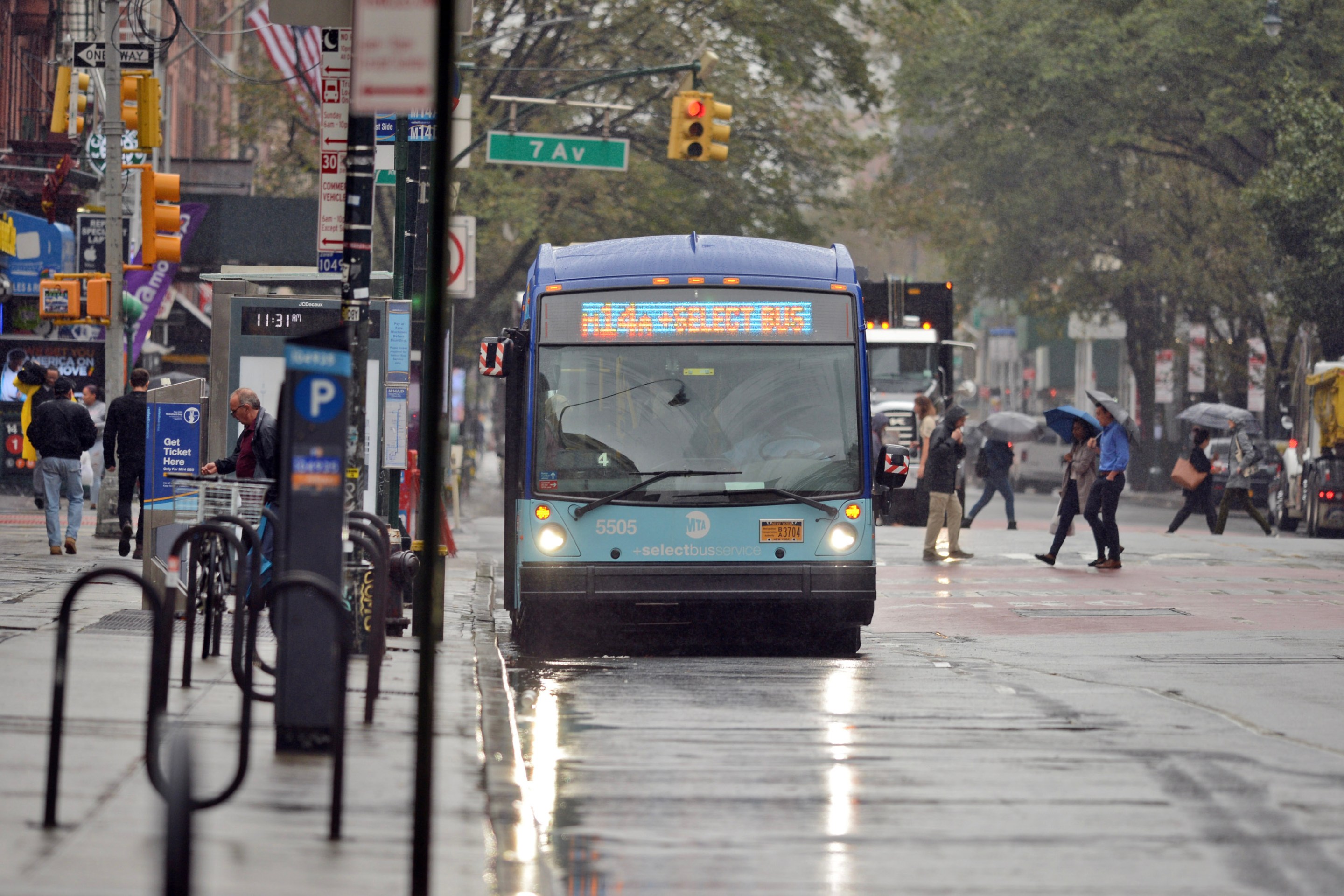During the first work week of congestion pricing, about 219,000 fewer cars entered the relief zone; that’s a 7.5-percent decrease in traffic. It’s clear the toll is working. What’s less clear is how the Adams administration plans to keep it that way. As time goes on, we can expect a rebound in traffic as drivers get used to the new tolls. Some will return to driving because there's less traffic, especially if we don’t reclaim this newly freed street space in a useful way. If New Yorkers are going to consistently choose transit over their cars, every neighborhood needs access to viable options to do that.
The best among them is Bus Rapid Transit, which can transform public mobility relatively quickly, cheaply, and broadly.
BRT involves more than just designating a bus lane – BRT is a set of tactics that work together to make buses run quickly, frequently, and widely. New York City has implemented a few of these tactics already: dedicated bus lanes, improved signal timing, and camera enforcement of blocked bus lanes. But our buses remain the slowest in the nation. A true bus rapid transit system goes further – combining physically separated lanes with widespread use of all-door boarding, off-bus payment, and raised platform boarding – and specifically prioritizes extending reliable and speedy service into every district of a city (something New York City sadly lacks).
A single lane of private vehicles might handle 600 to 1,600 people per hour, but an on-street busway can move up to 25,000 passengers in the same timeframe. Committing to this on a wide scale would transform the city’s transit landscape; and committing on a wide scale is actually doable. BRT’s simple, at-grade interventions and strategic boarding policies are not complicated or expensive to implement. It’s a way around all the factors that have made it nearly impossible to expand our subway system in the modern era. Repurposing car lanes for BRT can very quickly create and connect service to locations lacking it, and create convenient transit options for New Yorkers stuck in car dependence.
Annie Weinstock and Walter Hook of People-Oriented Cities recommend that New York start by extending bus routes across the East River bridges and then across town. Several buses just terminate or turn around at the bridges. Why? By extending them, we could create new service over the Williamsburg, Manhattan, Brooklyn, and Queensboro bridges; and crosstown via Houston, Canal, Chambers, and 59th streets. Yes, these extensions will make the routes longer, which is why we also need to combine BRT’s other tactics — separated lanes, speedy boarding — with an investment in more buses along each route. More buses, moving faster, going farther.

The transformation would be dramatic, and BRT implementation would be much easier now that congestion pricing has freed up street space. But beware the rebound effect; as drivers realize that travel times have significantly decreased, more of them will choose to pay the toll to enjoy a much faster commute (an even more likely tradeoff since Gov. Hochul reduced the toll from the approved $15 to the compromise $9). It's inevitable that some drivers will make that calculation and decide the toll is worth it, but the degree to which congestion rebounds will depend on how well we’ve reclaimed street space for more-efficient modes. And the longer we wait, the more cars come back, making it harder, and less politically palatable, to reallocate that street space for buses.
London, for example, acted immediately. On the first day of its congestion pricing program, London deployed 300 new buses to existing routes and created new routes into the congestion zone. Within a year, 29,000 more Londoners were riding buses than before congestion pricing.
Making congestion pricing a long-term success requires intentionality and forethought. Congestion pricing does work, and has worked elsewhere, but it requires a system set up to succeed. The tolls is asking New Yorkers to consider using other travel methods over a car whenever possible, but officials still need to do the hard work of giving them reliable and convenient access to those methods. And with the program in the White House crosshairs, it’s crucial that every New Yorker feels the benefits in their daily lives.
Unlike London, we’re far behind. New York decision makers should have been planning these service upgrades for years now, not only because the Streets Plan requires it, but also because congestion pricing’s success and legacy depends on it. Luckily, BRT is much faster and cheaper to implement than a subway line.
If the city Department of Transportation and MTA support the work — and local elected leaders don’t stand in the way in their individual districts — New York City can seize this moment and get started now on building the kind of transit network on which a modern city depends.






